Bali’s oldest painting tradition is found in Klungkung, in the village of Kamasan. These paintings, also known as a wayang style, depict tales of the Hindu epics, namely the Mahabharata and the Ramayana. They present dense, detailed scenes, visualising religious stories and their lessons. The main patrons of the Kamasan painters was the royalty of the Gelgel Kingdom, a vassal state of the Majapahit Empire. Even after the fall of the old kings, the painters persisted, continuing the tradition to this day.
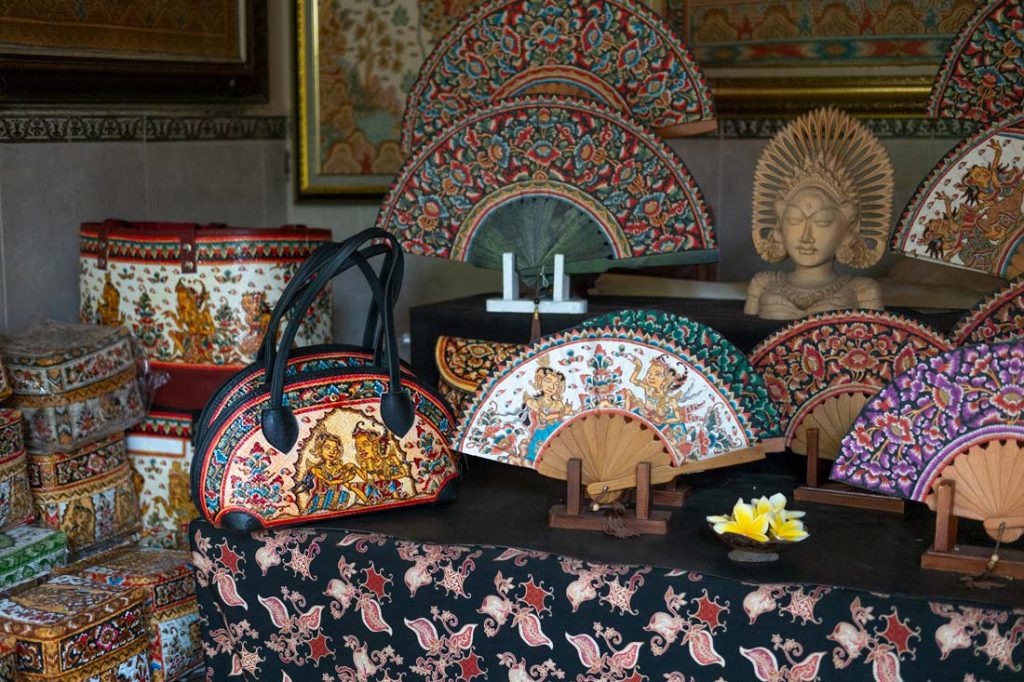
Like many other craft villages in Bali, the Kamasan painting style is an inheritance, passed from one generation to the next. Yet, despite their historical importance to Bali, many of today’s Kamasan painters must fend for themselves. Relying on demand for their paintings to keep their brushes wet.
Seeing this, Dewi Aldita started a small business called Galeri Kamasan back in 2019, selling hand-painted products prepared by Kamasan painters. Charming keben boxes (woven boxes used to carry offerings), traditional fans, purses and handbags, all adorned with original artworks.
Dewi works with Pande and Sinar, a husband and wife team who have also worked together since 1997. Pande was trained by his uncle, maestro I Nyoman Mandra, recognised as being responsible for reviving the tradition in the village back in 1974. Pande sketches and draws, Sinar paints the colours onto canvas. “It takes 5 years to learn and know the style,” says Pande. “It’s not just about artistic skill. You have to know the stories, the characters, their facial expressions, iconography, associated colours.”
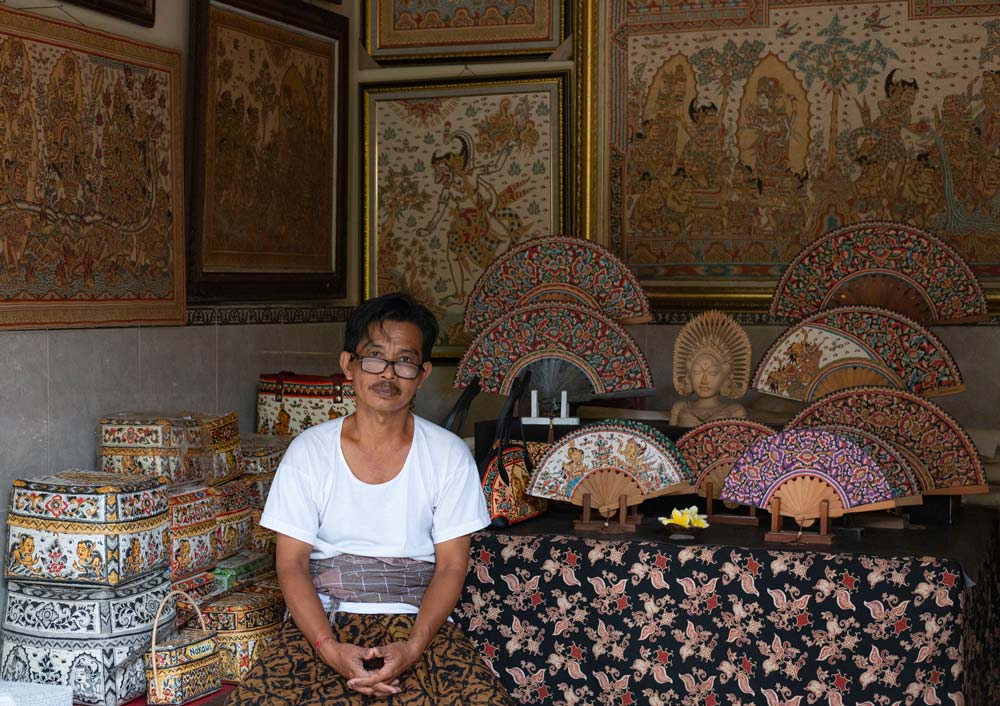
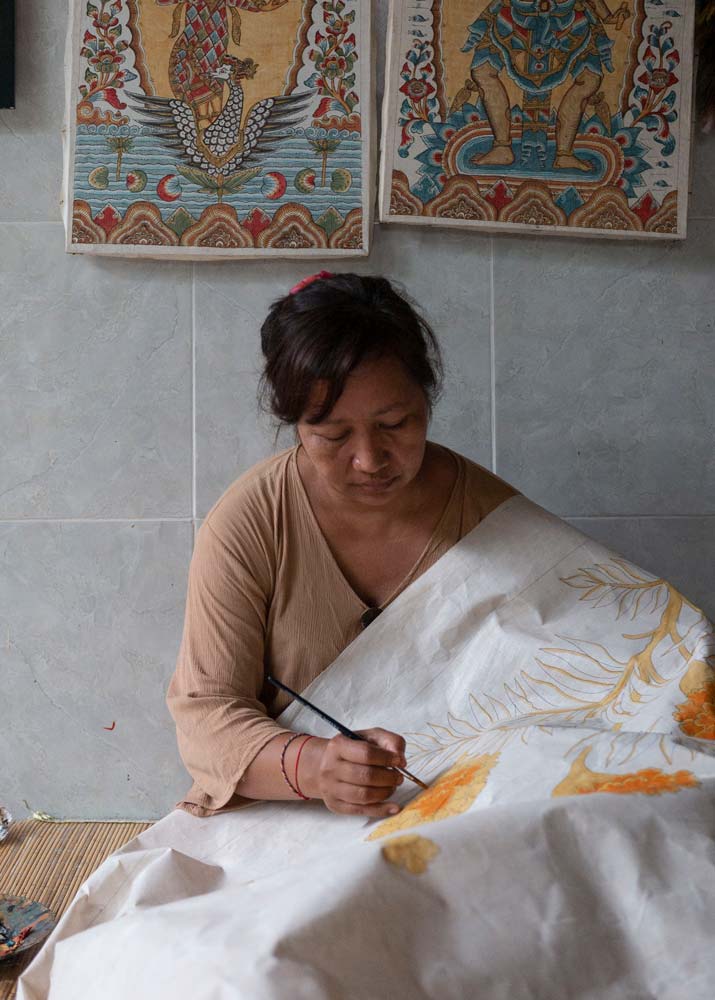
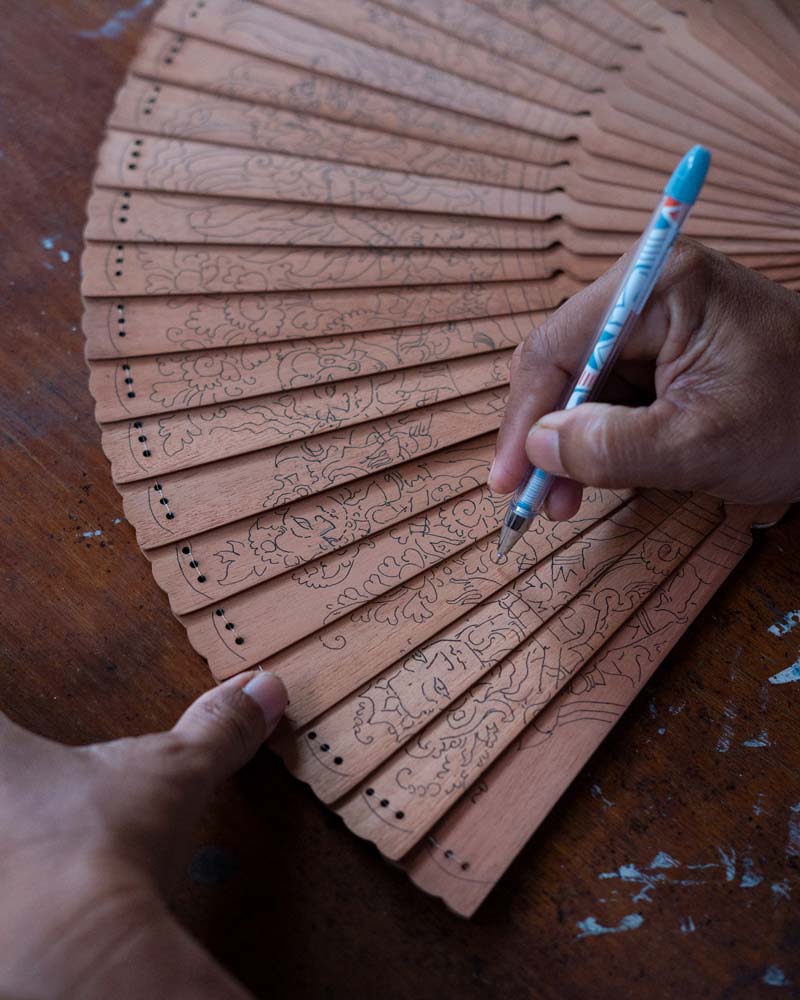
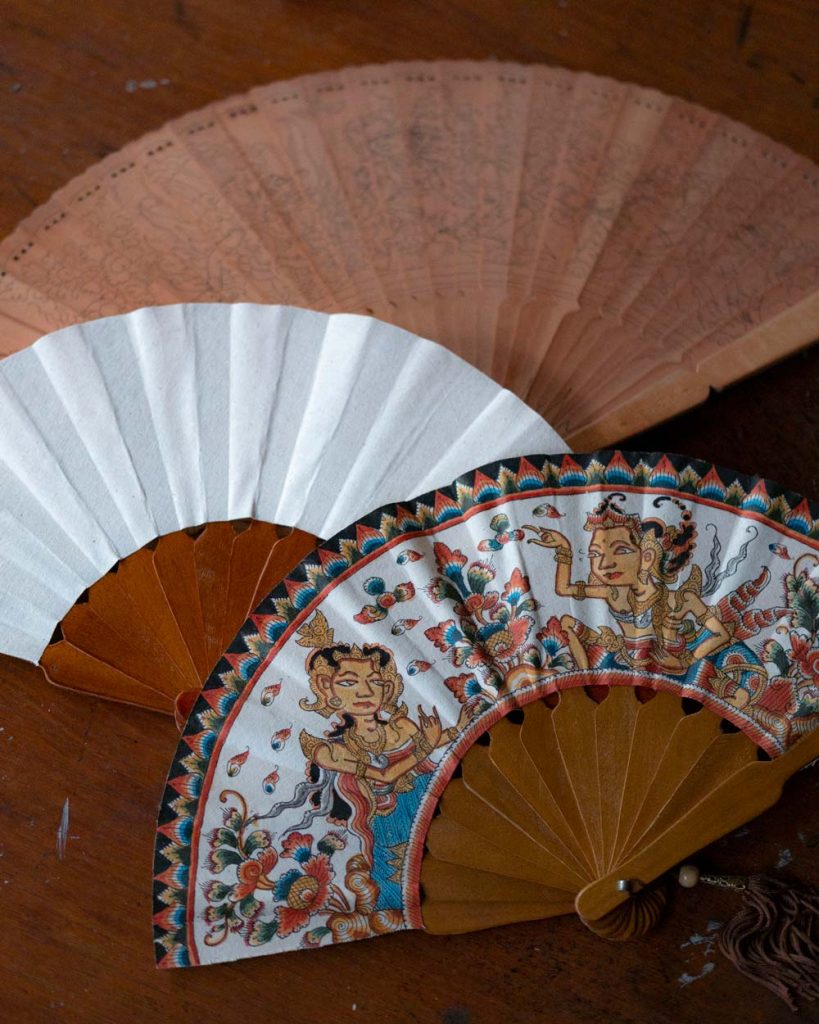
Kamasan painters like Pande and Sinar still get commissions. Temples and palaces use them as decoration, and some hotels and private homes also have an interest. But it is long work, one metre on canvas takes around two weeks to finish and a typical tableau is between two to three metres. Plus, big commissions can be few and far between.
Thus, applying their skills to products has allowed them to have a more secure income. Galeri Kamasan is a hit, especially amongst modern Balinese women. Dewi understands that ceremonies are very much a social affair, and to come with these beautiful, vibrant boxes and fans can be a statement piece. These bespoke items also help to democratise the Kamasan painting; not everyone can afford an entire canvas, but to own a fan painted in the authentic classical style is an item one can be proud of possessing. Especially knowing it helps the traditional painters.
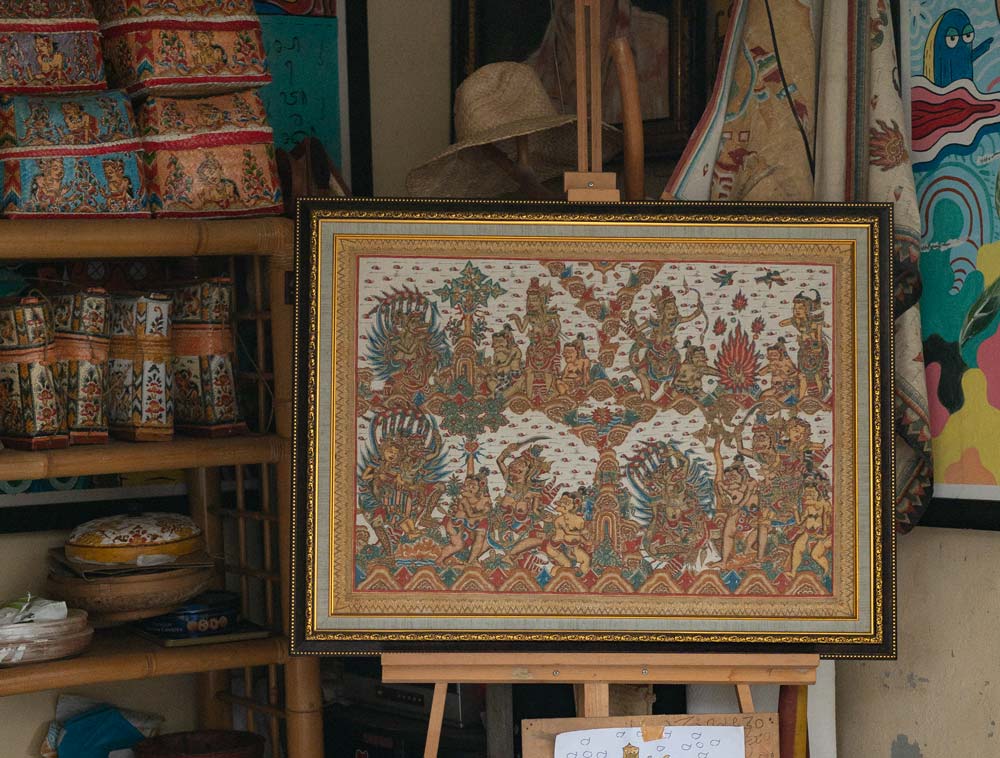
Asked whether he believes it affects the ‘purity’ of the tradition, the practical painter replies: “If you’re too idealist, you won’t eat. It’s the same art, just on a new medium. Our wayang paintings can now live on, used daily on functional items”
What’s more, with the increased income from Galeri Kamasan, Pande and Sinar have been able to start their dream: to create a sanggar, a group or collective centred on the learning of the arts. Every Saturday they invite the children from their neighbourhood to learn the basic Kamasan skills, around 10-15 children come every week. “Whether the children are good, or interested in continuing the tradition, is in fate’s hands. At least we can pass our knowledge on to them,” says Pande.
Shop / Browse Galeri Kamasan’s collection and support by going to their Instagram page: @galeri.kamasan
This is three-part article on ‘Keeping the Craft Alive’, to read all three parts download our May-June Edition for free here, or go to:
• Part 1: The Stories on the Tapestries
• Part 2: Leaf Weaving in New Dimensions
• Part 3: New Canvases, New Opportunities







